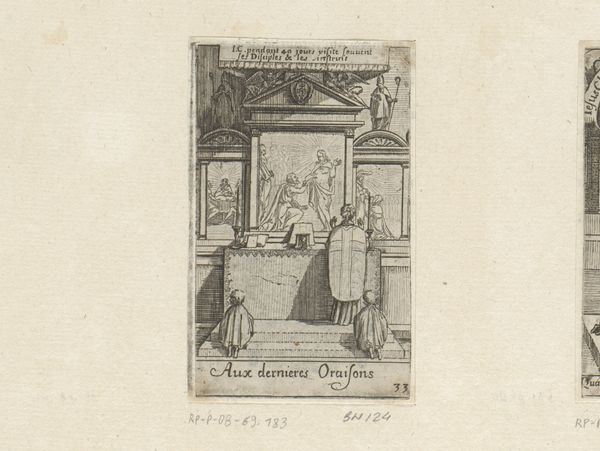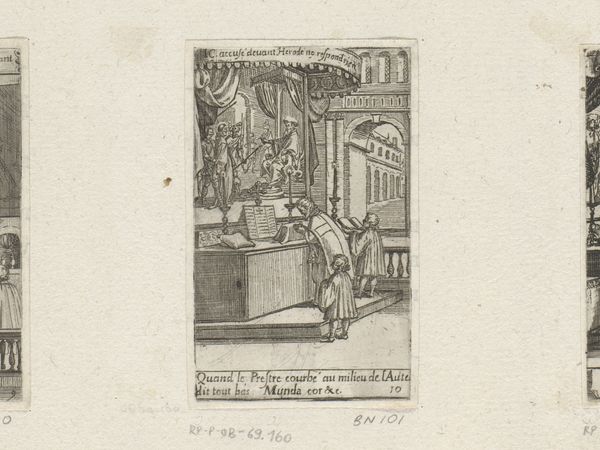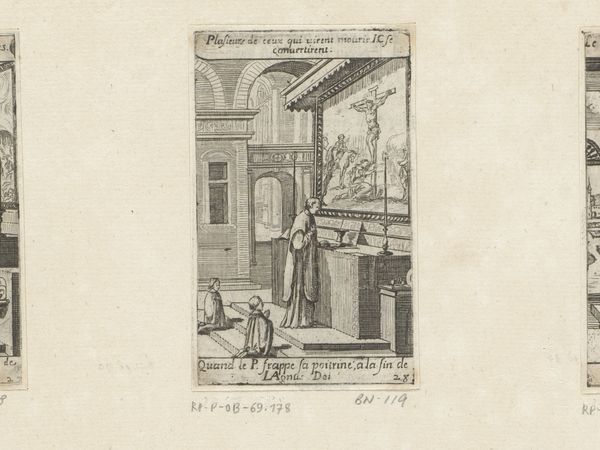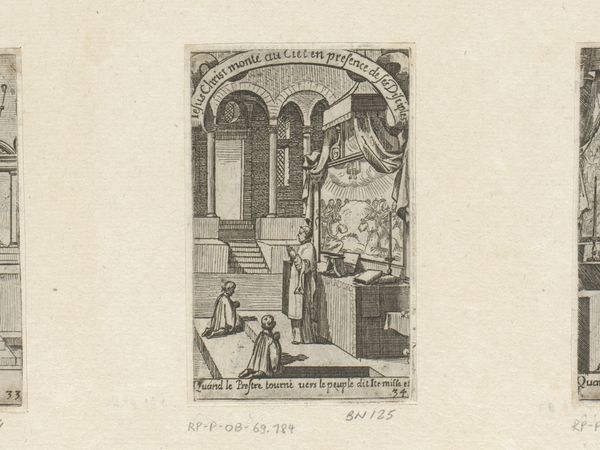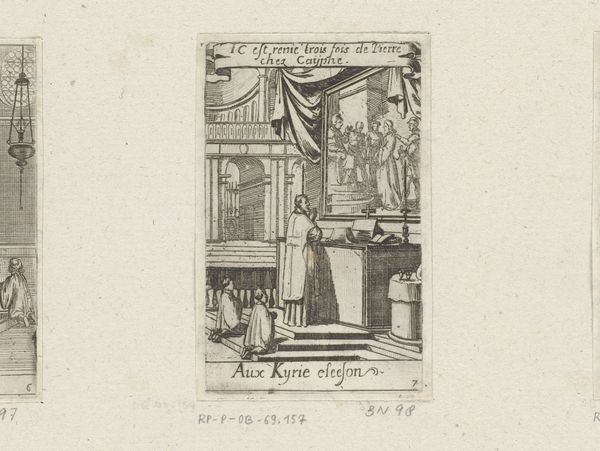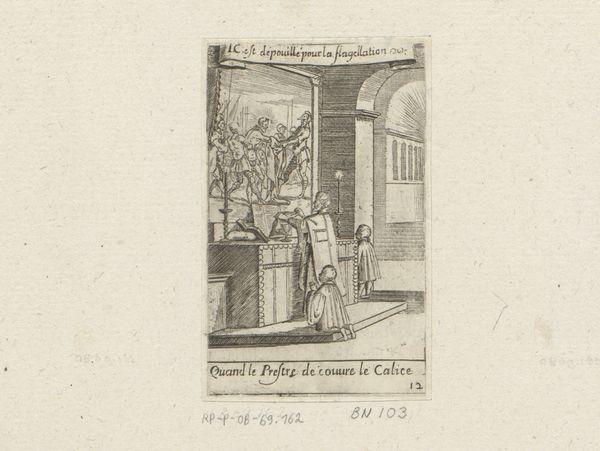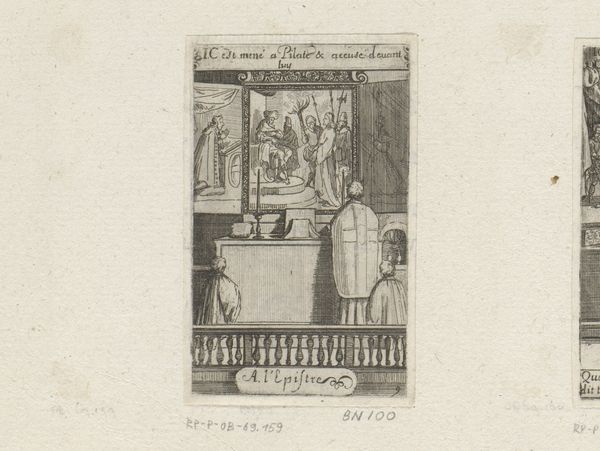
print, engraving
#
aged paper
#
toned paper
#
light pencil work
#
baroque
# print
#
sketch book
#
figuration
#
personal sketchbook
#
sketchwork
#
journal
#
line
#
sketchbook drawing
#
history-painting
#
storyboard and sketchbook work
#
sketchbook art
#
engraving
Dimensions: height 84 mm, width 52 mm
Copyright: Rijks Museum: Open Domain
Editor: This is "Priest with Two Acolytes before an Altar" by Sébastien Leclerc I, created in 1661. It's an engraving. I find it really interesting how the artist uses such fine lines to depict this religious scene; it's almost like looking at a miniature stage set. How do you interpret this work? Curator: The scene immediately evokes a sense of tradition and ritual, wouldn't you agree? Leclerc was masterful at embedding potent symbolic imagery. Think about the altar, the robes, even the posture of the figures. They aren’t merely aesthetic choices but deliberate signifiers of power and faith. Consider how the architecture itself frames the scene—it emphasizes a kind of divine performance, echoing historical religious pageantry. What elements stand out to you regarding symbolic language? Editor: I notice the light, particularly how it illuminates the altar piece compared to the darker areas around the figures. Is that significant? Curator: Precisely. Light is a long-standing visual code for divine presence. The strategic placement isn't accidental; it directs our gaze and reinforces the central narrative of revelation. And those acolytes kneeling? They visually embody the faithful’s submission, an iconic theme throughout centuries of religious art. Editor: So, beyond just depicting a scene, it's reinforcing these established visual ideas? Curator: Exactly! Leclerc taps into our shared cultural memory. He uses these symbols to communicate, to reaffirm deeply ingrained beliefs about religious authority and divine intervention. It’s almost like a carefully choreographed dance of faith visualized for a 17th-century audience and for us. It speaks to the continuity of cultural meaning through visual language. Editor: I hadn't considered how much these familiar images contribute to our understanding even today. Thanks! Curator: And thank you for noticing that. Now, consider how similar visual cues appear across eras and cultures; that’s where iconography truly gets interesting!
Comments
No comments
Be the first to comment and join the conversation on the ultimate creative platform.


